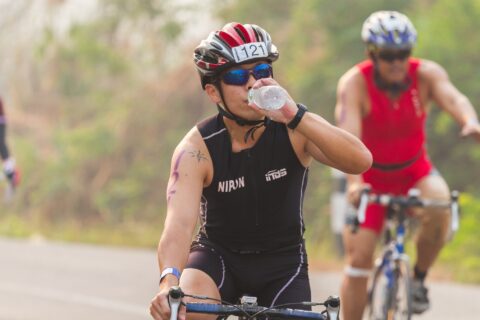Insulin resistance (IR), or carbohydrate intolerance, is, in my opinion, a hereditary trait or predisposition that is present to varying degrees in a large proportion of modern humans. Its widespread distribution in people on all continents suggests that it must have been of significant evolutionary survival value. IR is a condition in which the body has an impaired capacity to safely metabolize and store ingested carbohydrate.
Humans are not the only mammals to exhibit insulin resistance. Any carnivorous species is likely to be IR, and the cat family appears to be especially affected. Since IR is a necessary factor leading to type 2 diabetes mellitus (T2DM), it is not surprising that, like humans, domesticated cats and captive African lions are also experiencing an epidemic increase in T2DM (and obesity)—and for the same reasons.
Visible external evidence of insulin resistance becomes increasingly apparent with age, generally beginning to show as increased difficulty in controlling body mass in middle age, leading to obesity, high blood pressure, and the metabolic syndrome, including T2DM. Factors that worsen IR with age might include diets high in sugar, high-fructose corn syrup, and other carbohydrates, and likely aggravated by low levels of habitual physical activity.
Excess glucose disrupts regulation and storage
The common abnormality in IR is resistance of the liver to the action of insulin. Insulin regulates the rate at which the liver produces glucose from fat and protein or stores blood glucose derived from the digestion of ingested carbohydrate. But in insulin resistance the liver does not properly ”recognize” insulin. As a result, the livers of people with IR overproduce glucose 24 hours a day; this is the immediate cause of the raised blood glucose concentrations in T2DM.
The liver and muscles of persons with insulin resistance also have a reduced capacity to store glucose. As a consequence, when a person with IR ingests a high-carbohydrate meal, the blood glucose concentration rises excessively, requiring the oversecretion of insulin to remove the added glucose from the bloodstream. This is necessary because glucose in high concentration is toxic to all the cells of the body. But if the glucose load from the ingested carbohydrate cannot be stored in the liver or muscles, it will be converted to fat (triglyceride) in the liver and transported as triglyceride in the bloodstream to the fat cells. In this way, the toxic substance, glucose, is converted and stored as a somewhat less toxic substance, fat. But when too much fat is stored, it too can begin to have detrimental effects.

Is Weight Management as Simple As Calories In, Calories Out? With Dr. Timothy Noakes
Excess fat leads to changes in cholesterol
Two other abnormalities present in individuals with insulin resistance when they ingest high-carbohydrate diets are low blood HDL cholesterol concentrations and increased numbers of small, dense LDL cholesterol particles in the bloodstream. There is abundant evidence clearly showing that these biological markers of IR (and of a habitual high-carbohydrate diet)—elevated blood glucose; insulin and triglyceride concentrations; low HDL cholesterol concentrations; and increased numbers of small, dense LDL cholesterol particles—are also the best predictors of heart attack risk and perhaps of other diseases such as cancer and dementia.
What does all this mean?
- It is excess carbohydrate, not fat, in the diet that is causing the epidemic of chronic diseases, including obesity and T2DM, that first began in 1980, three years after the new U.S. dietary guidelines promoting a low-fat, high-carbohydrate diet were first promulgated.
- The amount of carbohydrate each of us can safely metabolize is determined by our individual degree of insulin resistance. In my opinion, the range of safe daily carbohydrate intake goes from 25 to 200 grams per day, depending on each individual’s degree of IR. To optimize their health, those with T2DM and who are the most IR must restrict their carbohydrate intakes to about 25 g/day, whereas those who are without IR can safely ingest 200 g/day. But in my opinion, there is never any need to ingest more carbohydrate, even if one is exercising for many hours a day. Humans evolved as fat-burning athletes without any essential requirement for even a single gram of ingested carbohydrate to keep us active and healthy. In my opinion, we are the most healthy when we return to that state.
For 33 years I followed and advocated through my book, Lore of Running, the current dogma that to be active and healthy, one must eat a diet low in fat and high in carbohydrate. I now believe that this advice was quite wrong. I apologize. It was an honest error.
But if, like me, you have insulin resistance, I hope you will take my apology to heart and, for the sake of your future health, consider limiting the amount of carbohydrate that you include in your diet. You may be amazed by the transformation in your health that this simple dietary change can produce.

This excerpt has been adapted from Joe Friel’s book Fast After 50 (2015) with permission from the publisher.





